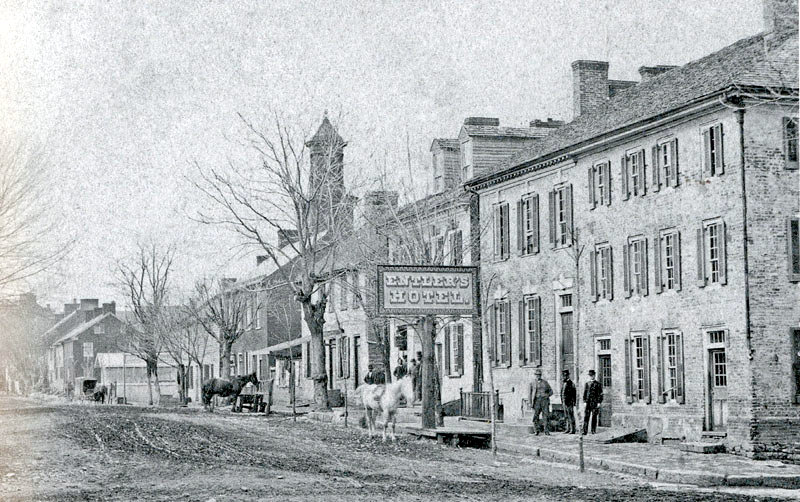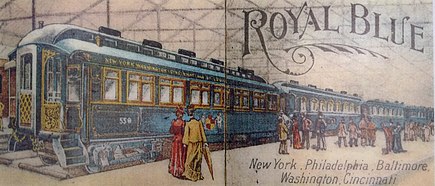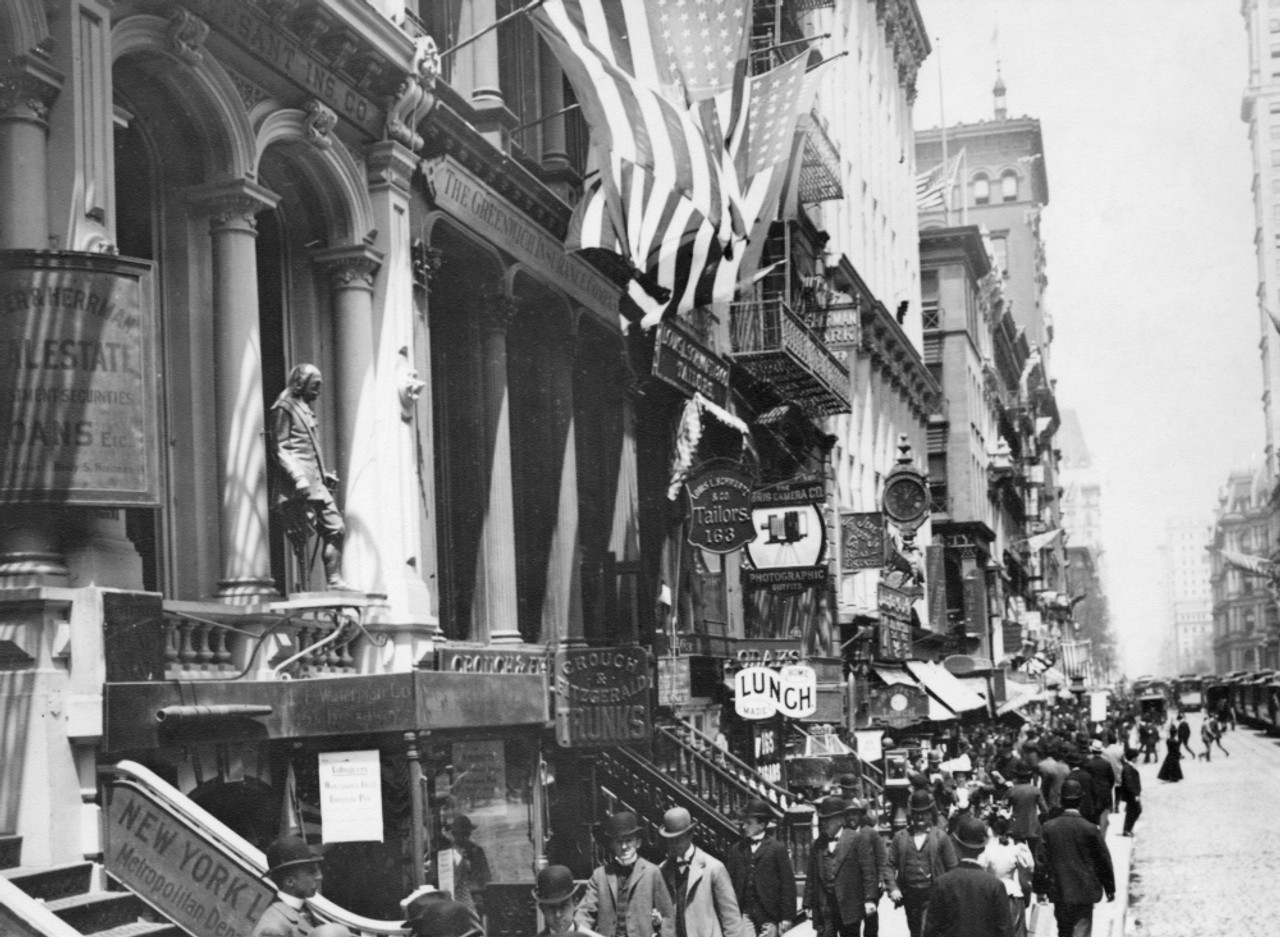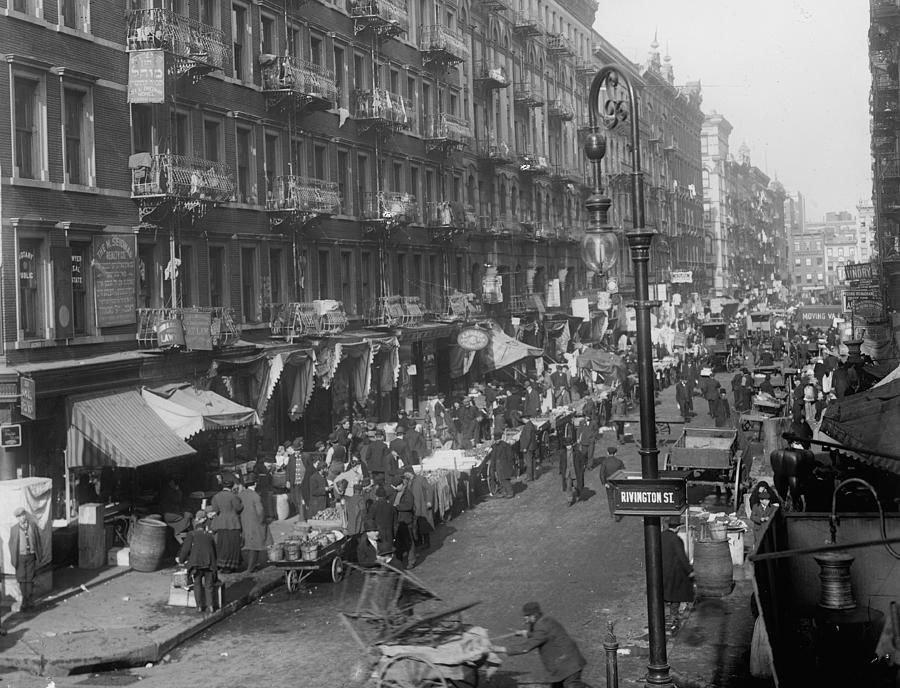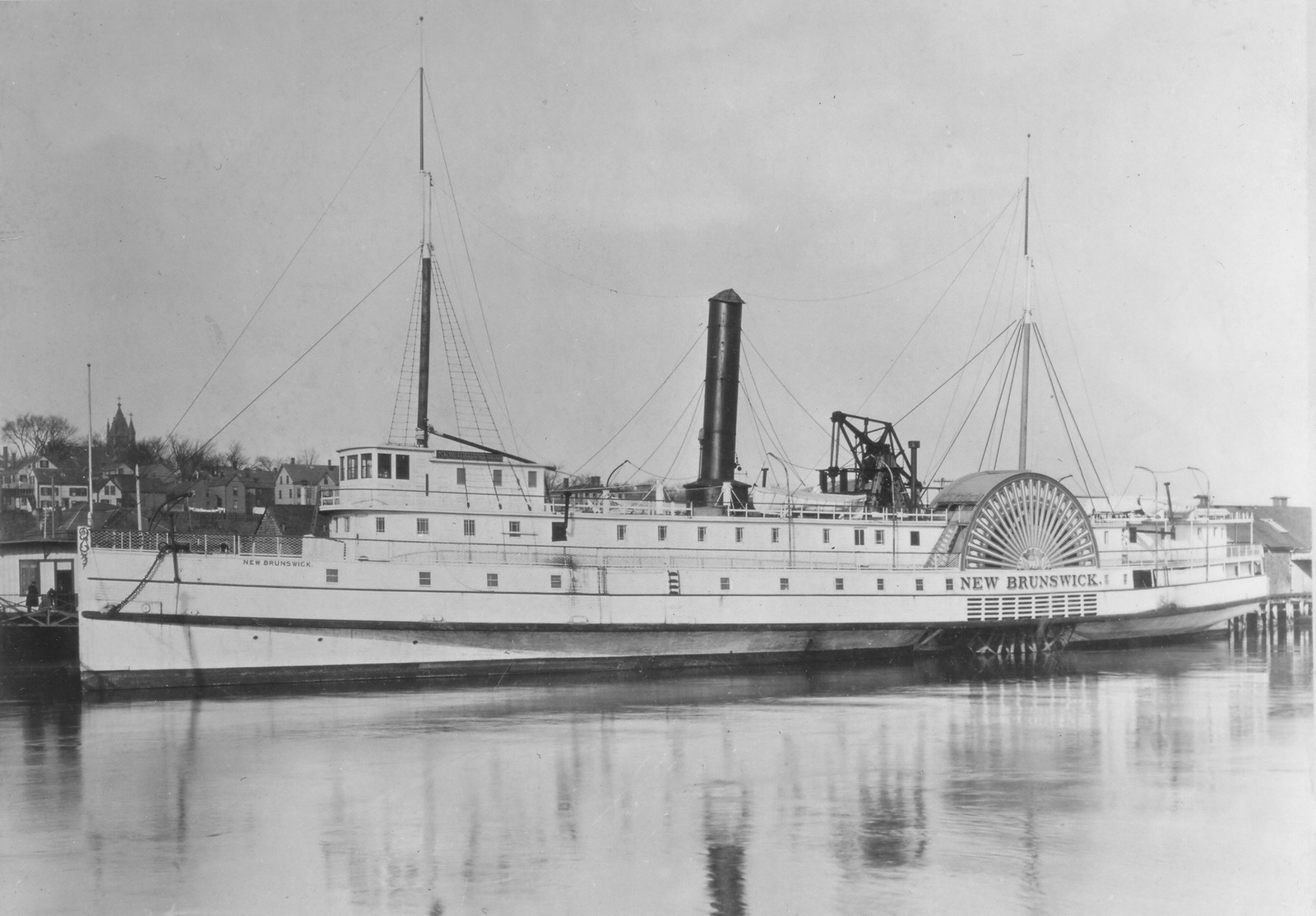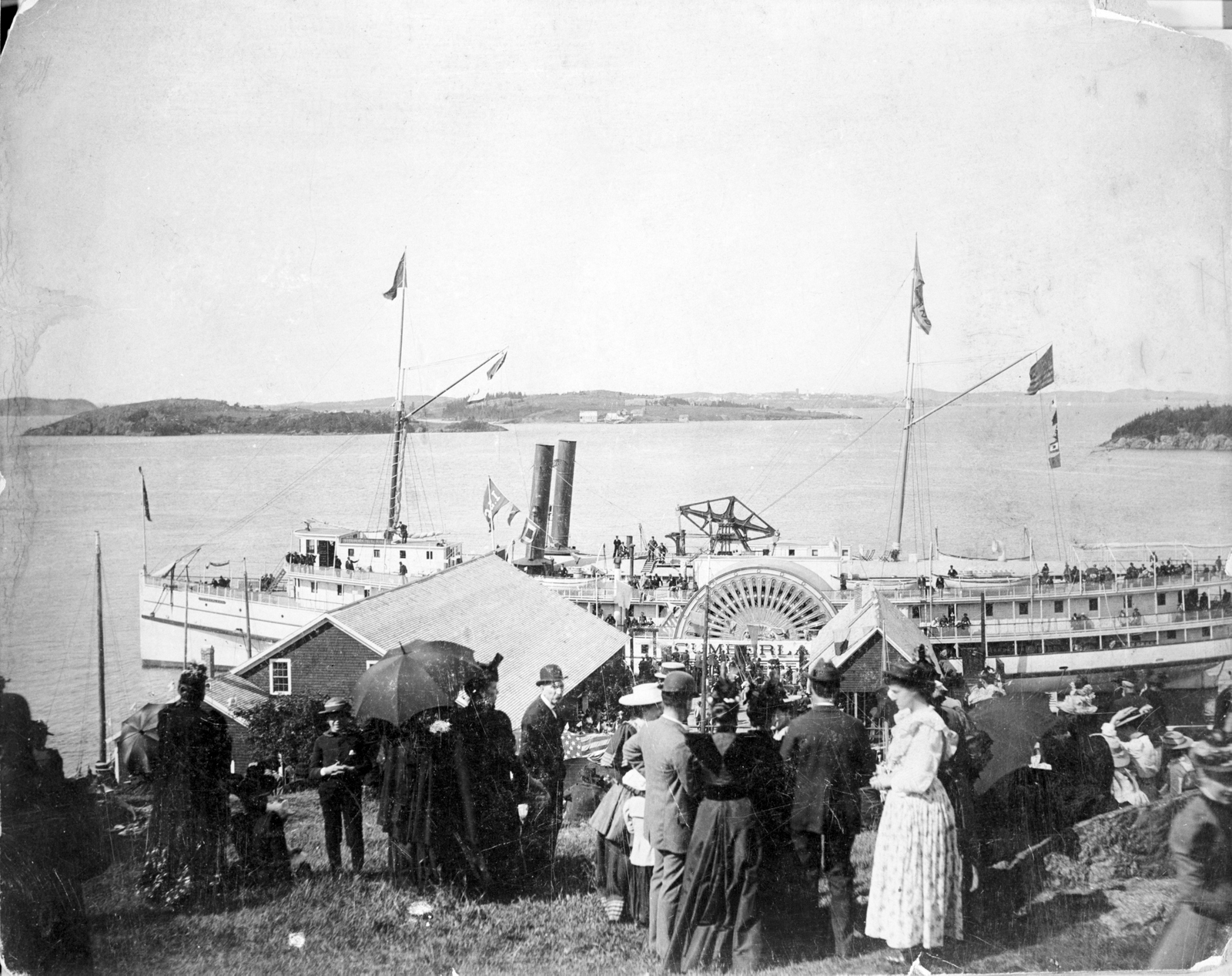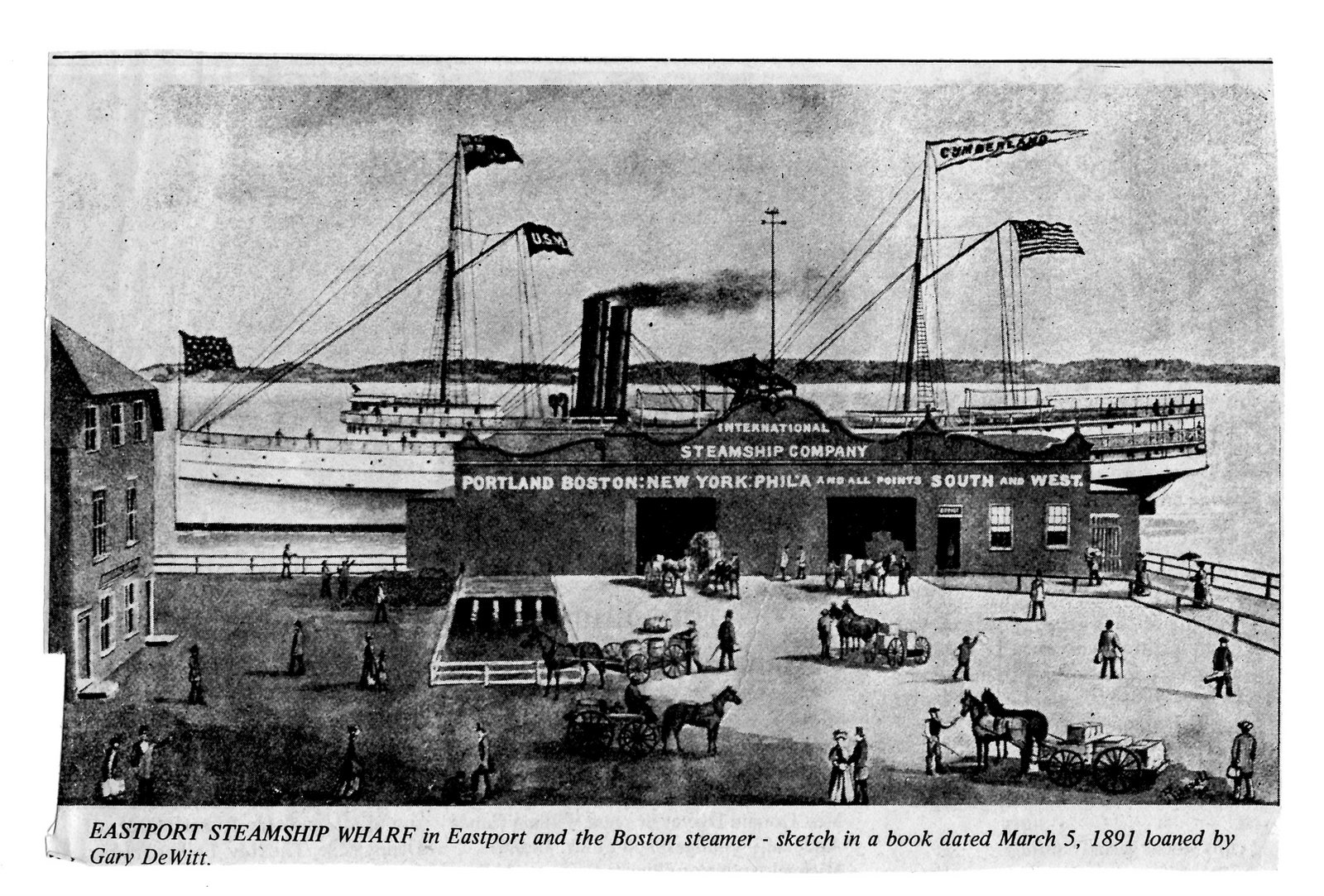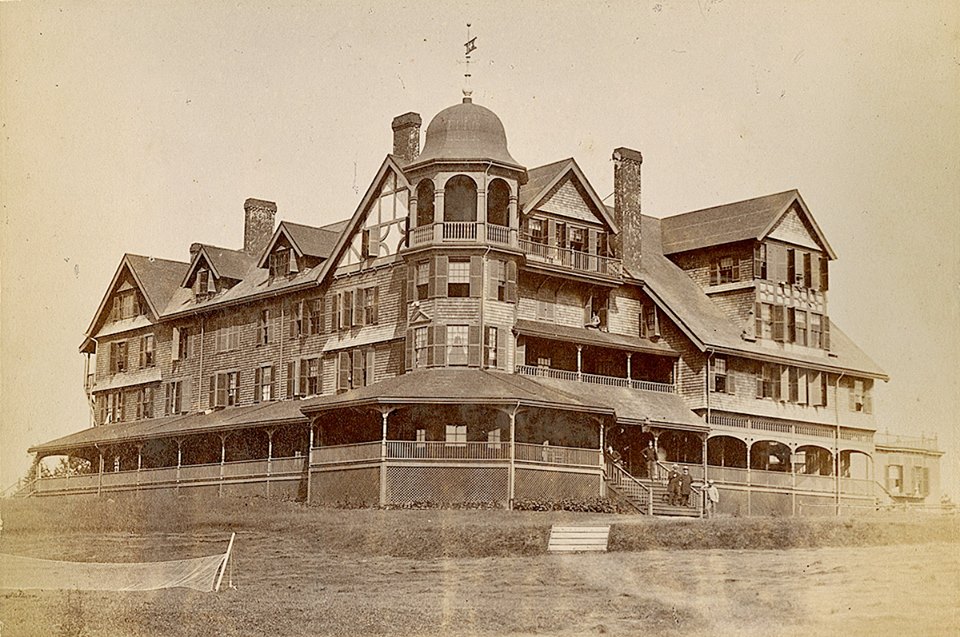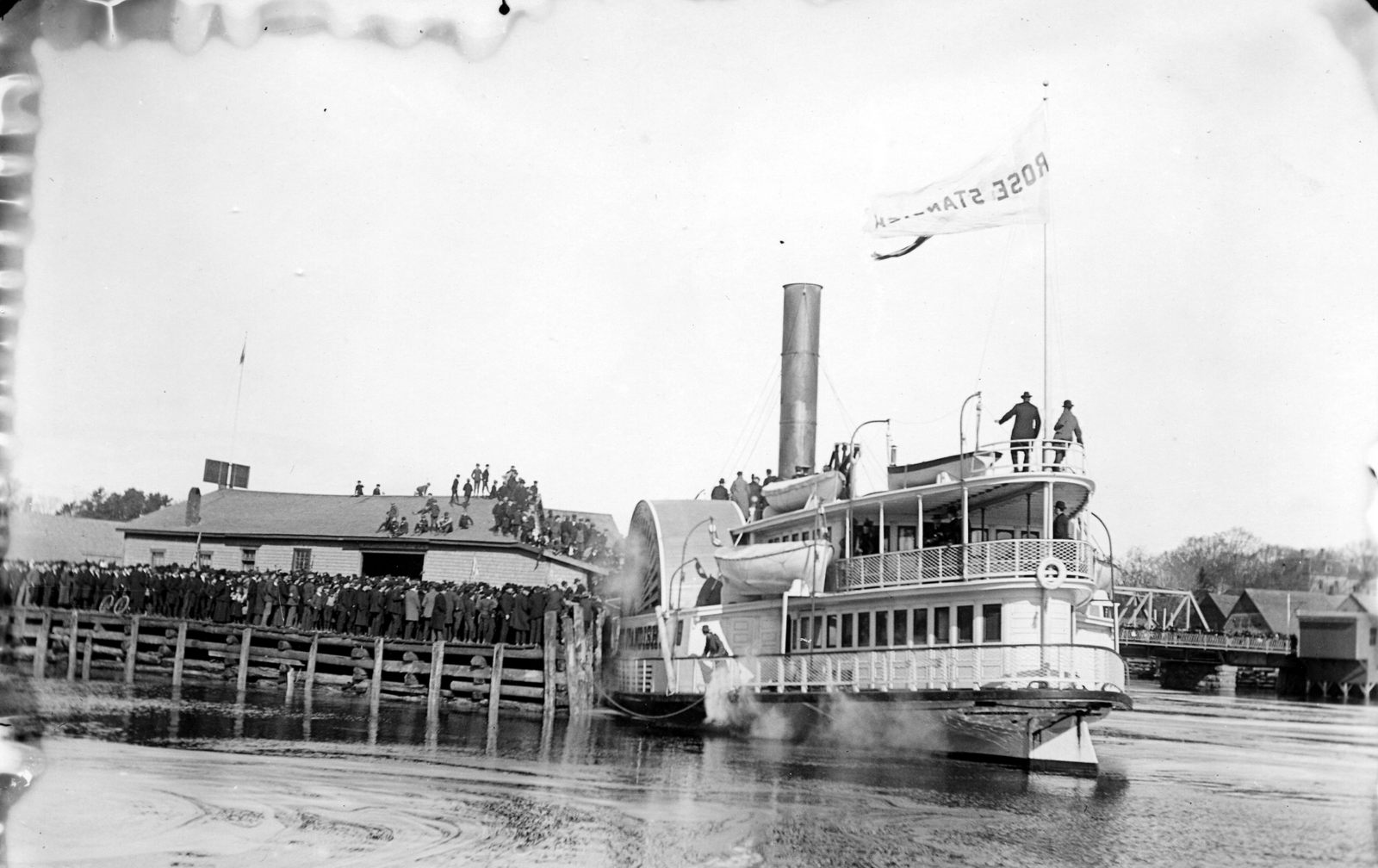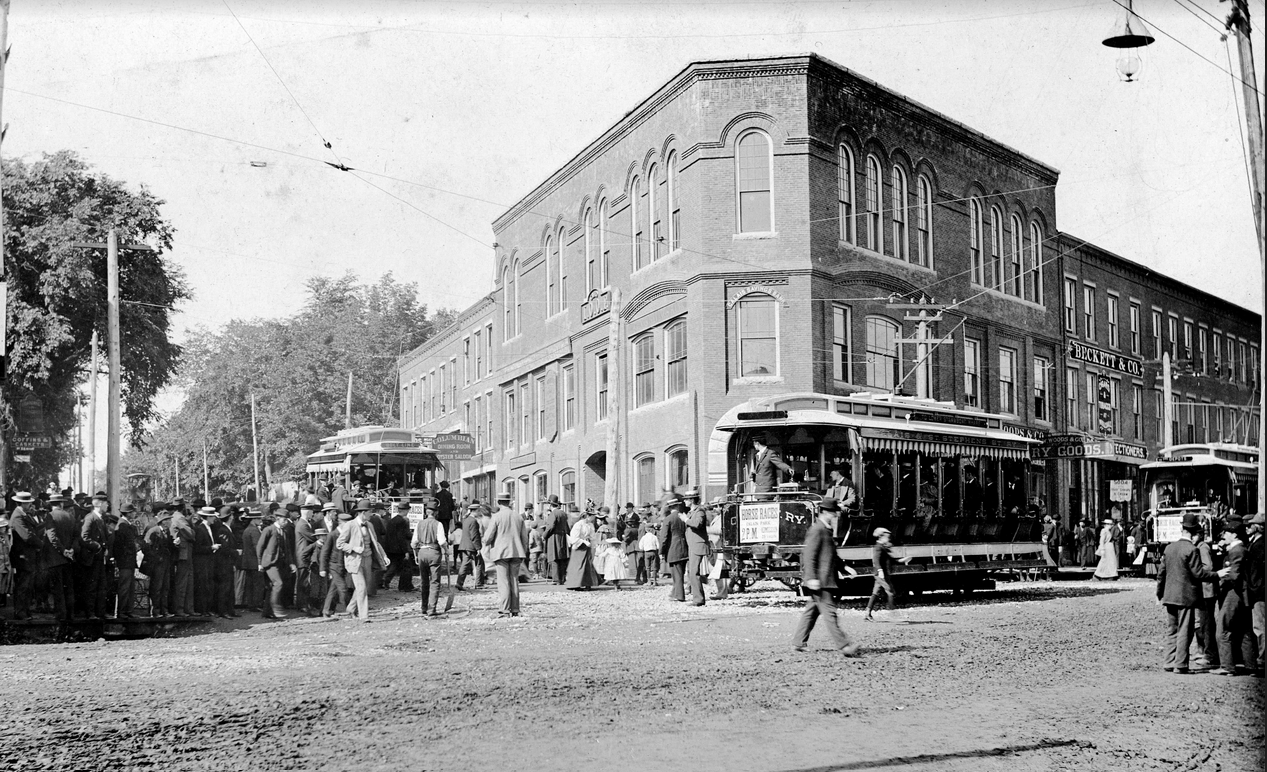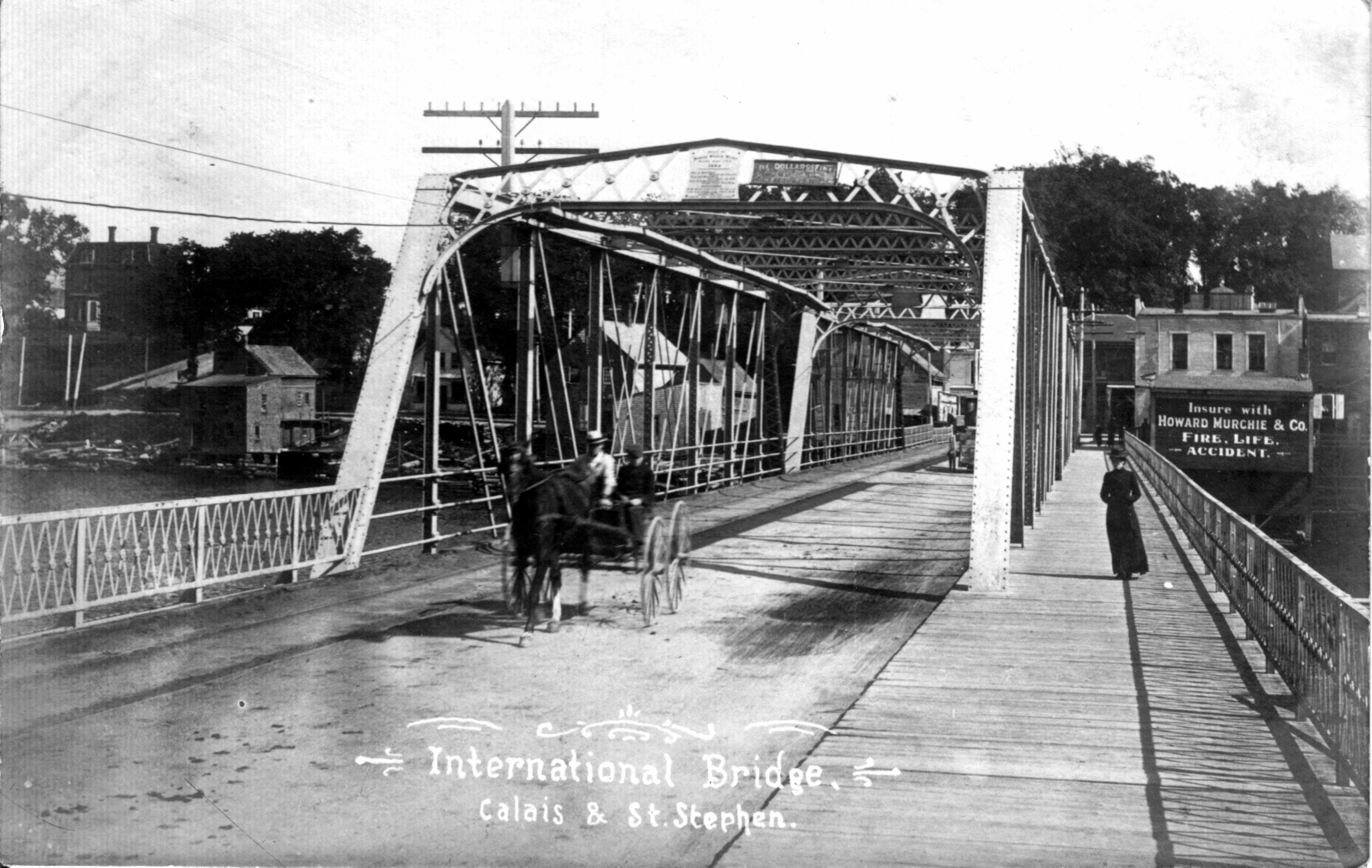Shepherdstown West Virginia 1800s
Shepherdstown is a small town in West Virginia on the Potomac. Said to be the oldest incorporated town in West Virginia it was established in 1762 and in 1895 had a population of 1300. Today it is only slightly larger. In 1895, a resident of Shepherdstown, identified only by his initials HMT, boarded a train in Baltimore with a final destination of Calais. His later correspondence provided no clue to the purpose of his trip. HMT does not appear to have been a man given to fits of wanderlust. He had, it seems, never before visited New York or Boston. In his “Letter From Maine”set forth below, he comments that people from his part of the country rarely travel so far north. It took a bit of luck to discover HMT’s identity. A chance reference in the Shepherdstown newspaper of May 1895 revealed that H.M Turner of Shepherdstown had recently become an immigration inspector and was then posted in Calais. When he arrived in Calais in March of 1895 he wrote home to describe his journey to Downeast Maine and his thoughts on the community to which he had been posted.
His travelogue was published in the local Shepherdstown newspaper and is interesting on a number of levels. There is, of course, a southerner’s perspective on “Yankees” in general but his description of his journey by rail and sea provides an insight into the discomforts and uncertainties of traveling by steamship in the late 1800’s. His impressions of New York which he formed in only two hours are also enlightening.
We’ve added a few photos to give you a better idea of what HTM would have seen on his journey to the land of the Yankee.
Shepherdstown West Virginia Reciter 14 March 1895
A Letter From Maine.
Calais, Maine March 4. 1895
It is not often that persons living in Shepherdstown wander either by “sea or land” to that northern portion of the United States included in the Commonwealth of Maine, where “Uncle Sam’s” territory is lashed by the waves of the Atlantic and borders on the American possessions of Her Majesty Queen Victoria. Feeling that some of the readers of the Reciter would not object to reading a short of a trip to me at least, both novel and interesting I shall with no further apology try to give an account of my journey to the city of Calais, in the State of Maine.
B and O stands for Baltimore and Ohio
Taking one of the B. and O. Royal Blue trains at Baltimore for New York I was impressed with the fact that distance is no longer considered by the traveler, but that cities, though many miles apart, are separated only by a very few hours of time. Arriving at New York about 3 o’clock in the afternoon and having until 5 o’clock to get over to the Grand Central depot, where I would take train for Boston, I walked leisurely up town, and before I realized it had plunged into the great crush on Broadway, the street of the greatest modern city on earth.
Broadway New York 1895
I shall not attempt to describe Broadway with its multitudes of people rushing on in one restless stream, its hundreds and thousands of horses, carriages, drays, cars, swearing hackmen and motormen, all jumbled up in one confused mass, being disentangled one moment only to become worse mixed up the next and more hopelessly blocking the street. I dropped into the store of the merchant prince Charles Broadway Rouss and in a few moments found his store was even greater than it is advertised to be and then after looking for a few moments at the great newspaper buildings, I selected a car that would take me a circuitous route through the tenement districts to the depot.
New York tenements-1895
Passing through the tenement districts of New York one will wonder how it can be that so much wealth and such great poverty can dwell within the gates of the same city. In passing through New York, one is made certain of the fact that there are some things at least dirtier than the politics either of the Tammany Democrats or the Piatt Republicans and that is the muddy streets.
Faneuil Hall Boston 1895 looks much the same today
I made good use of my eyes while in New York and left on the evening train for Boston, the city of colleges and baked beans. Remaining in Boston a few days, I visited many of the old buildings to the students of history with their connection with the Revolutionary War. The Old South Church and Faneuil Hall remain as they were a century ago and the dark, crumbling gravestones still mark the resting-places of the good old Quakers who died over a century ago and were buried in two graveyards that have been undisturbed and are now in the heart of the city. Boston, besides being a city with a large foreign as well as domestic trade, is the largest fish market in the world. Standing on the wharfs in the harbor one can see of fishing vessels, some unloading their cargoes, which are hoisted by ropes and pulleys in large baskets from the vessels to the scales where they are weighed, then loaded by men with forks into carts and carted off to the immense store-houses that are standing close by; some of these vessels are just coming in with their catch after enduring for perhaps weeks the buffeting of the waves, the sailors showing by frozen hands and feet their suffering from the blizzard of February, while other vessels have unloaded, scrubbed down their decks and are dropping one by one out to sea to be consigned once more to the mercy of the treacherous waves, perhaps, as so often happens, never to see land again. To give some idea of the hardships and dangers of the fishermen along the coast, let me say that Gloucester sends each spring a fleet of over 120 vessels to the fishing grounds of the Atlantic. Of this number 20 vessels are lost outright, while very few ever return without having their flags at half mast, showing that one or more of the sailors have been lost. The people of Shepherdstown hold memorial services each year over the graves of their dead, while each year the people of Gloucester hold appropriate services in memory of their friends who have found graves in the bottom of the sea.
The New Brunswick sailed the Boston, Eastport, St. John route for many decades.
Having determined to make the rest of my trip by water, and that the steamship New Brunswick would sail on the morning of February 21st, I embarked on that vessel, which weighed anchor at 8 o’clock a. m. I was not long in making the acquaintance of Captain Hillyard, the commander of the vessel, who had for forty years been riding over salt water; Captain Allen, the pilot; Mr. Sandburn, the purser; Mr. Loughs, the assistant purser; and Mr. Barnes, the steward; all of whom are kind-hearted and pleasant as only the officers of a vessel can be. Captain Hillyard invited me up into the pilot-house to take a view of Boston Harbor as we dropped out to sea. I accepted the invitation and for some time looked at the different places of interest that were pointed out.
Presently I was aware that my breakfast was not agreeing with me and thanking the captain for his attention I withdrew from the pilot-house and went below to my cabin. As I started down the pilot winked knowingly at the captain, who smiled rather audibly and invited me to come up again. We had now gotten fairly out to sea, the wind began to blow a gale, snow commenced falling faster and thicker, the waves rolled higher each time against the sides of the vessel, and as they broke, spread the spray over the decks. The vessel creaked and groaned, and I was seasick. Gentle reader, you may in sowing your wild oats, have tarried long at the wine or drank too many gin fizzes, from which you have thought you felt badly; you may have with “Johnny Jones and his Sister Sue, tackled the peach of emerald hue,” and then got a first-class case of cholera morbus, but in comparison to seasickness you were only slightly indisposed.
We had a rough passage from Boston to Portland. Maine, and reached that harbor about 7 o’clock at night. Portland has a calm harbor and then having been made fast to the wharf, the captain waited until 4 o’clock next morning, hoping the wind would cease and the seas go down. The supper bell rang, and as I had eaten no dinner and had nothing left in me that I had eaten for six months previous, I went down to my supper and was ushered to a seat on the right of the captain, who asked if I had been much sick? I thought I had been rather sick. “Did you heave up much?” was the captain’s next question. Amid the smiles of the officers, I confessed that I had hove as never creature hove since Jonah turned on the stomach of the whale.
We renewed our voyage at 4 o’clock Friday morning and had not been out from Portland more than a few hours until we encountered another snow squall which for a time made navigation dangerous, as the pilot could see but a few yards ahead and we were not far off the rocky coast of Maine. The day was rough, and the sea rougher. We traveled on until evening and the captain’s glasses showing that a heavier storm was approaching, we put in for the shore and reached what the sailors told me was “Sow West” harbor, just off Mt. Desert.
The Cumberland was one of Downeast’s most famous sidewheelers plying the Boston-St. John route
This is a calm harbor, protected by the mainland and small islands, and upon reaching it we found the steamship Cumberland and other vessels had preceded us in seeking shelter from the storm.
The Cumberland was one of Downeast’s most famous sidewheelers plying the Boston-St. John route
The danger being over by midnight, we weighed anchor and reached Eastport at 7 o’clock Saturday morning. Eastport is a thriving city of about 8,000, its chief industry is fish. Numerous sardine factories are located along the shore and off to the east some three miles lays Grand Manan Island, on which is located many pretty summer hotels and residences. In fact, the whole coast of Maine is one unbroken chain of summer resorts.
Turner would have seen the Tyn-y-Coed resort when passing Campobello, one of three on the island.
We left Eastport at o’clock a. m. and reached St. John, New Brunswick, Saturday evening, after having what the crew called the roughest waters they had encountered this winter. St. John is a city of 50,000. It has many fine stores, beautiful private residences and many handsome churches. Its people look both pleasant and intelligent, many of whom are in business connected with the sea. I was struck with the fine horses and sleighs, the elegant furs worn by the people. the beautiful dogs running at large on the streets and the keen, cold air. We remained in St. John over Sunday, returned to Eastport I Monday, took boat for Calais Tuesday at noon, and reached that city at 9 o’clock at night.
Turner would have boarded the Rose Standish for the trip to Calais from Eastport
When Turner arrived in Calais he would found a bustling city much larger than his hometown
The steel bridge to St. Stephen was new in 1895, rebuilt to handle the weight of the streetcars
Calais is by no means a village but is a city of 5000 inhabitants. It is located on the St. Croix River, about 30 miles from Eastport on the coast, and is connected by bridge with St. Stephens on the Canadian side. St. Stephens has a population of about 5.000. Milltown. Maine, and Milltown N.B just above Calais and St. Stephens lie on both sides of the St. Croix and are also connected with bridges. These two towns, I am told contain about 3.000 people, who are in lumber and cotton mills. Calais has many fine churches, three good hotels, many fine stores, good schools and one newspaper, besides job printing offices There are several large tanneries and judging from the great quantities of lumber on the river bank many mills for the manufacture of lumber are in operation. The channel of the river being deep, and the tides raising to a great height, medium sized vessels can anchor at its wharfs, and lumber and other mill products are shipped to various parts of the world.
The most remarkable thing I have seen during the short time I have been here is the great number of superb driving horses continually passing at break- neck speed, hitched to the most beautiful sleighs imaginable. These horses are not large but are all splendidly bred and show expert handling. I have not had time to get acquainted with many of the people, but those I have met are extremely kind and pleasant. I have met several old soldiers. Upon being introduced to a gentleman the other day and finding I was from Shepherdstown, he said: “Well, young man I have been licked like the devil down at your home.” I found he had been an officer in the Federal army, had been at Burnside’s bridge during the battle of Antietam in the fight at Butler’s woods, near town, had spent nearly all of one winter at Harper’s Ferry, and had been captured by Mosby who he says was a gentleman and treated him well. To my surprise, these old soldiers with whom I have talked think Lee Jackson and Stewart among the greatest generals known to history and freely acknowledge the splendid fighting qualities of Stonewall Jackson’s men as well as of other Southern soldiers.
Space will not allow me to speak of the hunting and fishing one gets in this section. I shall leave this for another time. I will close by saying that I am pleased with Calais and its people, but Shepherdstown to me is the biggest spot on the map of the world. My treasures are there, and I would like to be there also.
H. M. T.
As suggested above, Turner did write another letter about Downeast Maine to the Shepherdstown paper in May of 1895 and we have a copy which will attempt to transcribe-it is a poor copy. As to Turner’s history we were able to determine he and his family had a large and seemingly successful farm in Shepherdstown and he was a “big bug” in town, the secretary of the Grange and prominent in local politics which may explain his appointment as an immigration inspector, a very sought after position in those days. He was transferred from Calais to Vanceboro, then to St. John N.B. and finally to Yarmouth N.S. where he was still on the job in 1915. His wife and family never joined him and the Shepherdstown Register reported regularly over the years on his visits home on leave. Mrs. H.M. Turner is mentioned in the paper over the decades in the social news of Shepherdstown, the last reference in 1930. As we don’t know Turner’s first name and his wife as always referred to as Mrs. H.M.Turner we have been unable to locate their obituaries.
Read pt. 2 (and find out who HMT was) here.

